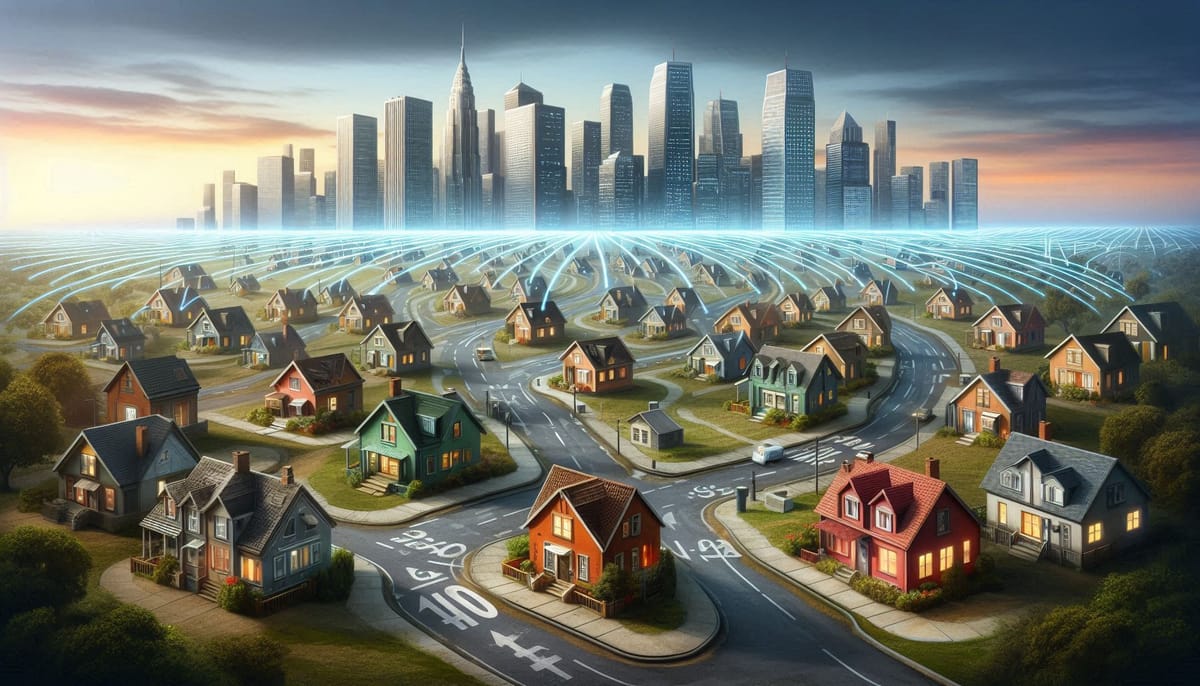IPv6 vs. IPv4: Understanding the Internet's Address Book
IPv4, the internet's current address system, is running out of addresses. IPv6 is the solution, offering a virtually unlimited supply, improved security, and faster performance. Learn the key differences between the two, the benefits of IPv6 adoption, and the challenges involved in this transition.

The internet is like a massive network of roads, connecting billions of devices. To communicate, each device needs an address, just like a house needs a street address. This is where IPv4 and IPv6 come in – they are the ways we assign these addresses to devices on the internet.
Table of Contents
- Introduction
- What is IPv4?
- What is IPv6?
- Why the Need for IPv6?
- Key Differences Between IPv4 and IPv6
- Benefits of IPv6
- Challenges of IPv6 Adoption
- Examples and Tutorials
- Conclusion
Introduction
Imagine the internet as a huge city with millions of houses. Each house needs a unique address so the mail carrier can deliver letters. IPv4 was like the first address system in this city. It worked well for a while, but the city grew so big that they ran out of addresses. IPv6 is the new address system that can handle the growing number of houses (devices) connecting to the internet.
What is IPv4?
IPv4 stands for Internet Protocol version 4. It's like the old address system in our city.
- Address Format: IPv4 addresses look like four numbers separated by dots, like
192.168.1.1. - Total Addresses: IPv4 can only create about 4.3 billion unique addresses. That's like having a city with only 4.3 billion houses.
What is IPv6?
IPv6 stands for Internet Protocol version 6. It's the new address system designed to handle the growing internet.
- Address Format: IPv6 addresses are longer and look like a bunch of numbers and letters separated by colons, like
2001:0db8:85a3:0000:0000:8a2e:0370:7334. - Total Addresses: IPv6 can create a mind-boggling number of addresses, enough for every grain of sand on every beach in the world!
Why the Need for IPv6?
The internet is growing rapidly. More devices are connecting, like smartphones, smart TVs, and even refrigerators! IPv4 simply doesn't have enough addresses to handle all these new devices. Imagine if the city ran out of house numbers – it would be chaos!
Key Differences Between IPv4 and IPv6
| Feature | IPv4 | IPv6 |
|---|---|---|
| Address Length | 32 bits | 128 bits |
| Notation | Dotted decimal (192.168.1.1) |
Hexadecimal (2001:0db8:85a3:0000:0000:8a2e:0370:7334) |
| Address Space | Limited to 4.3 billion addresses | Virtually unlimited |
| Security | Optional | Built-in IPsec support |
| Configuration | Manual or DHCP | Auto-configuration (stateless and stateful) |
Benefits of IPv6
- More Addresses: IPv6 can handle the internet's explosive growth, giving everyone an address.
- Improved Security: IPv6 has built-in security features, making it harder for hackers to steal your information.
- Better Performance: IPv6 can make the internet faster and more efficient.
- Simpler Setup: Devices can connect to the internet more easily using IPv6.
Challenges of IPv6 Adoption
- Compatibility: Not all devices and networks support IPv6 yet. It's like some houses still using old-fashioned street addresses.
- Cost: Upgrading networks to use IPv6 can be expensive.
- Complexity: Network administrators need to learn new skills to manage IPv6 networks.
- Adoption Rate: Transitioning from IPv4 to IPv6 takes time.
Examples and Tutorials
Example: Checking Your IP Address
You can check if your device is using IPv4 or IPv6. Here's how:
- Open Command Prompt (Windows): Press the
Windows Key + R, typecmd, and pressEnter. - Type the Command: Type
ipconfigand pressEnter. - Check the Output: Look for
IPv4 AddressandIPv6 Address.
Example: Using IPv6 in Python Code
If you're a programmer, you might want to learn how to use IPv6 in your code. Here's a simple Python example:
import socket
# Create an IPv6 socket
ipv6_socket = socket.socket(socket.AF_INET6, socket.SOCK_STREAM)
# Connect to a server using IPv6
server_address = ('2001:0db8:85a3:0000:0000:8a2e:0370:7334', 80) # Replace with your server's IPv6 address
ipv6_socket.connect(server_address)
print('Connected to the server using IPv6!')
ipv6_socket.close()
Conclusion
The internet is constantly evolving, and IPv6 is a crucial part of this evolution. It's the new address system that can handle the growing number of devices connecting to the internet. While there are challenges in the transition, the benefits of IPv6 are clear: more addresses, better security, and faster performance. Understanding IPv6 and its differences from IPv4 will help you navigate the ever-changing digital world.




